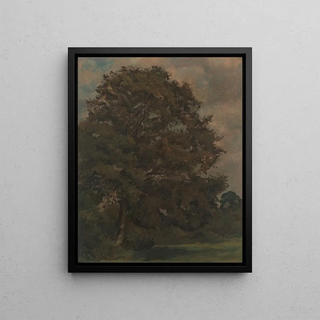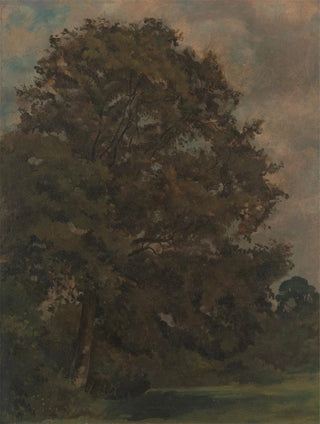Art print | Study of a ash tree - Lionel Constable


View from behind

Frame (optional)
In the fascinating world of landscape art, the piece "Étude d'un frêne" by Lionel Constable stands out for its delicacy and attention to detail. This work, which immortalizes a majestic ash tree, transports us to the heart of nature, revealing the beauty of organic forms and the light that dances through the foliage. The artist, a master of English landscape painting, manages to capture the very essence of his subject, inviting the viewer to contemplate the serenity and grandeur of nature. The art print of this piece offers us a window into a world where nature and art meet, evoking both nostalgia and admiration for the simple yet profound beauty of the natural world.
Style and uniqueness of the work
Constable's work is characterized by an impressive technique, using fluid brushstrokes and vibrant colors to create a lively atmosphere. In "Étude d'un frêne," the ash tree, with its winding branches and lush foliage, is depicted with such precision that it almost seems to come alive. The artist skillfully plays with light and shadow, giving the tree a sculptural dimension that draws the eye and invites exploration. The color palette, ranging from deep greens to warm browns, evokes different seasons and the cycles of life, thus creating an emotional connection between the viewer and nature. This unique style, blending realism and impressionism, makes this piece a masterpiece that transcends time and continues to inspire many contemporary artists.
The artist and his influence
Lionel Constable, an emblematic figure of the English landscape in the early 19th century, knew how to mark his era with his innovative approach to plein air painting. Influenced by great masters such as Turner and Gainsborough, he developed a personal style that emphasizes light and atmosphere. Constable was often in pursuit of natural truth, seeking to represent not only the landscape but also the emotion it evokes. His work had a significant impact on the Impressionist movement, inspiring artists such as Monet and Piss

Matte finish

View from behind

Frame (optional)
In the fascinating world of landscape art, the piece "Étude d'un frêne" by Lionel Constable stands out for its delicacy and attention to detail. This work, which immortalizes a majestic ash tree, transports us to the heart of nature, revealing the beauty of organic forms and the light that dances through the foliage. The artist, a master of English landscape painting, manages to capture the very essence of his subject, inviting the viewer to contemplate the serenity and grandeur of nature. The art print of this piece offers us a window into a world where nature and art meet, evoking both nostalgia and admiration for the simple yet profound beauty of the natural world.
Style and uniqueness of the work
Constable's work is characterized by an impressive technique, using fluid brushstrokes and vibrant colors to create a lively atmosphere. In "Étude d'un frêne," the ash tree, with its winding branches and lush foliage, is depicted with such precision that it almost seems to come alive. The artist skillfully plays with light and shadow, giving the tree a sculptural dimension that draws the eye and invites exploration. The color palette, ranging from deep greens to warm browns, evokes different seasons and the cycles of life, thus creating an emotional connection between the viewer and nature. This unique style, blending realism and impressionism, makes this piece a masterpiece that transcends time and continues to inspire many contemporary artists.
The artist and his influence
Lionel Constable, an emblematic figure of the English landscape in the early 19th century, knew how to mark his era with his innovative approach to plein air painting. Influenced by great masters such as Turner and Gainsborough, he developed a personal style that emphasizes light and atmosphere. Constable was often in pursuit of natural truth, seeking to represent not only the landscape but also the emotion it evokes. His work had a significant impact on the Impressionist movement, inspiring artists such as Monet and Piss






